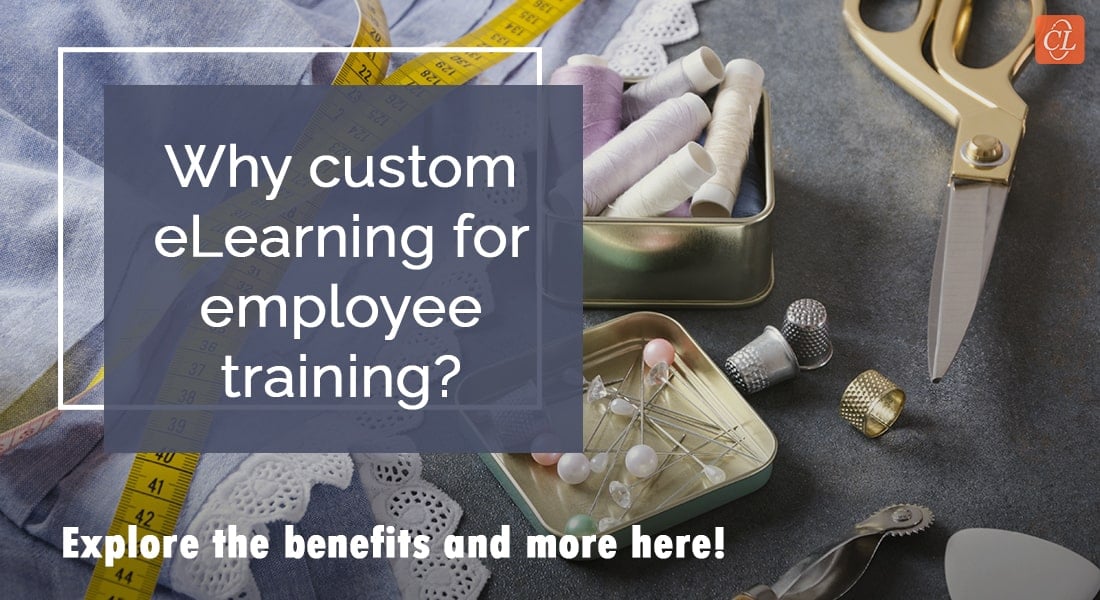5 Ways Custom eLearning Facilitates Sexual Harassment Training

Sexual harassment at workplace is a serious problem, something that no corporate should take lightly. However, in recent times fewer and fewer organizations have taken up the initiative to train employees on POSH. To add to this, the gradual fall of traditional approaches (face-to-face training) undertaken by these organizations to provide Prevention of Sexual Harassment training. Today, learners want to spend less time in training and organizations are looking for easier ways to schedule training.
Compliance training needs to reach beyond just merely reciting company policies in a classroom setting. Organizations can use custom eLearning to bring in a new perspective to how Prevention of Sexual Harassment (P.O.S.H) training programs are offered at workplace. It can result in shaping how employees think about the issues involved and allowing them to apply the principles to their everyday routine.
In this article, let’s look at some benefits of using custom eLearning to offer Prevention of Sexual Harassment training.
1. Create Impactful Training with Relatable Narratives/Scenarios
Just handing out paper materials or showing a PowerPoint presentation on sexual harassment policies won’t do it. Learners of today’s day and age, learn best through scenarios that are likely to occur in their everyday life. Scenario-based eLearning, as it is often referred to, enhances the learning process as it includes very less text and more of a conversation-based learning.
In order to create a training that is impactful and meaningful to the learner, use different scenarios with clear objectives. For example, scenarios can be used to:
-Explain the difference between harassment and sexual harassment
–Whether a particular behavior by an employee violates the sexual harassment policy of the organization (also called as scenario-based videos)
-Show them different situations (Scenarios) and let them guess if policies are being violated or not
-Assess the learners’ understanding of the course and provide necessary feedback
-Explain procedures on how to file a complaint
The intention of using scenarios is to completely immerse them and make them identify with the everyday interactions at workplace so that they actively participate in the learning process.
2. Deliver P.O.S.H Training in Small, Digestible Nuggets
Compliance trainings such as POSH when offered via the classroom training model may not interest learners regardless of how pressing the training objective is. In the middle of their busy schedules, employees may not be have time to undergo training that is text-heavy and lengthy. Even less so when the content is unengaging.
Microlearning is becoming more and more popular because of how it fits into the learners’ busy schedules, allowing them to make time for learning every single day. The scenario that I mentioned earlier can be turned into videos and packaged as 5-10-minute micro modules. These modules also have assessments at the end to encourage learners to think through specific situations, choose the correct responses, and analyze results.
3. Offer Training Across Multiple Locations
Organizations today are spread all across the world, which means that it will comprise employees working in different countries and cultures speaking different languages. Given their geographical and linguistic barriers, these employees cannot be brought to one location and offered training. Besides, different countries have different types of legal and compliance rules that organizations need to follow (or comply).
In such situations where employees are scattered among far-flung countries, eLearning can be easily distributed via the Learning Management System (LMS). An LMS is a central repository for all your POSH training materials. The learners just have to log in to the LMS and they can access the POSH scenario-based eLearning modules, videos, assessments, interactive PDFs, and so on.
4. Extend Multi-Device Training for Anytime-Anywhere Access
Modern learners access learning on multiple devices such as Smartphones, laptops, and tablets (iPads). Developing e-learning courses for Prevention of Sexual Harassment that are compatible with these devices is the need of the hour. Responsive learning is a must-have for any training to give learners the space to start and stop at any time and as often as necessary to accommodate their work and learning schedule. Instead of a run-of-the-mill compliance training, organizations must take into account the ‘multi-device learners’ of the modern corporate world and offer them quick and easy access to the training material.
5. Use LMS to Track and Document the Compliance Training
Due to the legal and compliance guidelines in different countries all over the world, it has now become imperative that organizations conduct and accurately document on a regular basis the time each learner spends on the POSH eLearning courses.
The Learning Management System offers organizations the option to leverage its data tracking and reporting capabilities to carefully keep a record of the learner’s activity. One can generate reports using the LMS and file them with the relevant authorities. These reports provide evidence of the organization’s compliance with laws and guidelines in the country concerned.
Prevention of Sexual Harassment is now discussed more than ever. With custom eLearning solutions, organizations can design POSH training that has the ability to create a culture of responsibility and respect in which employees feel responsible for sexual harassment prevention and are provided with better tools to understand how it works. A good POSH training results in a positive work environment that is free from harassment and discrimination.





